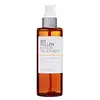What's inside
What's inside
 Key Ingredients
Key Ingredients

No key ingredients
 Benefits
Benefits

 Concerns
Concerns

No concerns
 Ingredients Side-by-side
Ingredients Side-by-side

Artemisia Annua Extract
MaskingGlycerin
HumectantButylene Glycol
HumectantWater
Skin Conditioning1,2-Hexanediol
Skin ConditioningBetaine
HumectantTrehalose
HumectantChondrus Crispus Extract
Skin ConditioningSaccharum Officinarum Extract
MoisturisingCarbomer
Emulsion StabilisingPolyacrylate Crosspolymer-6
Emulsion StabilisingTromethamine
BufferingPolyquaternium-51
Skin ConditioningEthylhexylglycerin
Skin ConditioningDisodium EDTA
Pollen Extract
EmollientGlycerin
HumectantGlycereth-26
HumectantWater
Skin Conditioning1,2-Hexanediol
Skin ConditioningButylene Glycol
HumectantNiacinamide
SmoothingPentylene Glycol
Skin ConditioningDiethoxyethyl Succinate
SolventBetaine
HumectantChondrus Crispus Extract
Skin ConditioningPEG-60 Hydrogenated Castor Oil
EmulsifyingSaccharum Officinarum Extract
MoisturisingPolyglyceryl-2 Oleate
EmulsifyingSodium Citrate
BufferingEthylhexylglycerin
Skin ConditioningAdenosine
Skin ConditioningDimethicone
EmollientHelianthus Annuus Seed Oil
EmollientLavandula Angustifolia Oil
MaskingDisodium EDTA
Glyceryl Glucoside
HumectantCitric Acid
BufferingAlcohol
AntimicrobialHydrogenated Lecithin
EmulsifyingPelargonium Graveolens Flower Oil
MaskingAnthemis Nobilis Flower Oil
MaskingCananga Odorata Flower Oil
MaskingCitrus Aurantium Bergamia Fruit Oil
MaskingRosa Damascena Flower Oil
MaskingRoyal Jelly Extract
Skin ConditioningLeontopodium Alpinum Callus Culture Extract
AntioxidantAspalathus Linearis Leaf Extract
Skin ConditioningPropanediol
SolventButyrospermum Parkii Butter
Skin ConditioningAnthemis Nobilis Flower Extract
MaskingHoney Extract
HumectantPhenethyl Alcohol
MaskingChrysanthemum Boreale Flower Extract
AntioxidantPropolis Extract
Skin ConditioningCaprylyl Glycol
EmollientSodium Hyaluronate
HumectantMaltodextrin
AbsorbentHydrolyzed Royal Jelly Protein
Skin ConditioningPollen Extract, Glycerin, Glycereth-26, Water, 1,2-Hexanediol, Butylene Glycol, Niacinamide, Pentylene Glycol, Diethoxyethyl Succinate, Betaine, Chondrus Crispus Extract, PEG-60 Hydrogenated Castor Oil, Saccharum Officinarum Extract, Polyglyceryl-2 Oleate, Sodium Citrate, Ethylhexylglycerin, Adenosine, Dimethicone, Helianthus Annuus Seed Oil, Lavandula Angustifolia Oil, Disodium EDTA, Glyceryl Glucoside, Citric Acid, Alcohol, Hydrogenated Lecithin, Pelargonium Graveolens Flower Oil, Anthemis Nobilis Flower Oil, Cananga Odorata Flower Oil, Citrus Aurantium Bergamia Fruit Oil, Rosa Damascena Flower Oil, Royal Jelly Extract, Leontopodium Alpinum Callus Culture Extract, Aspalathus Linearis Leaf Extract, Propanediol, Butyrospermum Parkii Butter, Anthemis Nobilis Flower Extract, Honey Extract, Phenethyl Alcohol, Chrysanthemum Boreale Flower Extract, Propolis Extract, Caprylyl Glycol, Sodium Hyaluronate, Maltodextrin, Hydrolyzed Royal Jelly Protein
Ingredients Explained
These ingredients are found in both products.
Ingredients higher up in an ingredient list are typically present in a larger amount.
1,2-Hexanediol is a synthetic liquid and another multi-functional powerhouse.
It is a:
- Humectant, drawing moisture into the skin
- Emollient, helping to soften skin
- Solvent, dispersing and stabilizing formulas
- Preservative booster, enhancing the antimicrobial activity of other preservatives
Betaine is a common humectant (a substance that promotes retention of moisture). It's known to be gentle on the skin and can help balance hydration.
This ingredient is best for improving hydration and soothing irritated skin. Studies also show it helps even out skin tone.
Fun fact: Betaine is naturally created in the skin and body. The kind found within cosmetic products can be either plant-derived or synthetic.
Another name for betaine is trimethylglycine.
Learn more about BetaineButylene Glycol (or BG) is used within cosmetic products for a few different reasons:
Overall, Butylene Glycol is a safe and well-rounded ingredient that works well with other ingredients.
Though this ingredient works well with most skin types, some people with sensitive skin may experience a reaction such as allergic rashes, closed comedones, or itchiness.
Learn more about Butylene GlycolChondrus Crispus Extract comes from a red algae native to the northern Atlantic coasts of Europe and North America. It helps hydrate the skin and is rich in antioxidants.
The antioxidants in chondrus crispus include lutein and zeaxanthin. Lutein has the ability to filter blue light from screens.
Other contents of chondrus crispus include polysaccharides, peptides, and amino acids. These help hydrate the skin.
What's the difference between algae and seaweed?
Algae is a broad term that includes seaweed. Not all algae is seaweed.
Disodium EDTA plays a role in making products more stable by aiding other preservatives.
It is a chelating agent, meaning it neutralizes metal ions that may be found in a product.
Disodium EDTA is a salt of edetic acid and is found to be safe in cosmetic ingredients.
Learn more about Disodium EDTAEthylhexylglycerin (we can't pronounce this either) is commonly used as a preservative and skin softener. It is derived from glyceryl.
You might see Ethylhexylglycerin often paired with other preservatives such as phenoxyethanol. Ethylhexylglycerin has been found to increase the effectiveness of these other preservatives.
Glycerin is already naturally found in your skin. It helps moisturize and protect your skin.
A study from 2016 found glycerin to be more effective as a humectant than AHAs and hyaluronic acid.
As a humectant, it helps the skin stay hydrated by pulling moisture to your skin. The low molecular weight of glycerin allows it to pull moisture into the deeper layers of your skin.
Hydrated skin improves your skin barrier; Your skin barrier helps protect against irritants and bacteria.
Glycerin has also been found to have antimicrobial and antiviral properties. Due to these properties, glycerin is often used in wound and burn treatments.
In cosmetics, glycerin is usually derived from plants such as soybean or palm. However, it can also be sourced from animals, such as tallow or animal fat.
This ingredient is organic, colorless, odorless, and non-toxic.
Glycerin is the name for this ingredient in American English. British English uses Glycerol/Glycerine.
Learn more about GlycerinThis ingredient is also called sugarcane extract. It is a moisturizing humectant and has skin soothing properties.
Similar to hyaluronic acid, sugarcane can attract moisture to your skin.
Glycolic acid is a derivative of sugarcane. While glycolic acid is an AHA with exfoliating properties, sugarcane is not an AHA.
A study from 2021 found the compounds in sugarcane extract to have antioxidant, antimicrobial, and anti-inflammatory activity. The study also suggests these compounds can inhibit skin ageing enzymes and promote collagen synthesis.
Learn more about Saccharum Officinarum ExtractWater. It's the most common cosmetic ingredient of all. You'll usually see it at the top of ingredient lists, meaning that it makes up the largest part of the product.
So why is it so popular? Water most often acts as a solvent - this means that it helps dissolve other ingredients into the formulation.
You'll also recognize water as that liquid we all need to stay alive. If you see this, drink a glass of water. Stay hydrated!
Learn more about Water